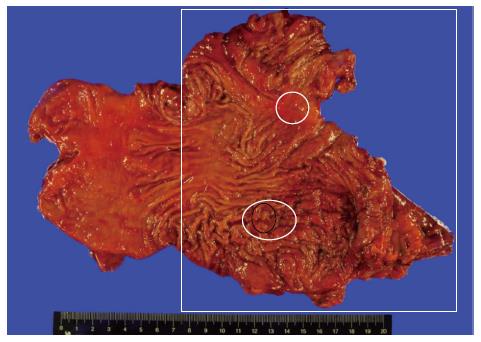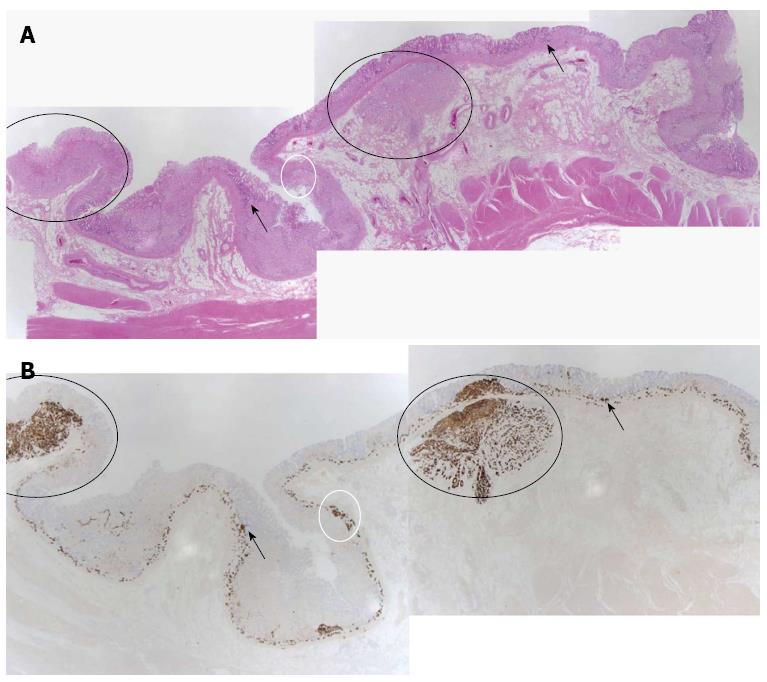Copyright
©The Author(s) 2015.
World J Gastroenterol. Dec 14, 2015; 21(46): 13195-13200
Published online Dec 14, 2015. doi: 10.3748/wjg.v21.i46.13195
Published online Dec 14, 2015. doi: 10.3748/wjg.v21.i46.13195
Figure 1 Endoscopic features of the multiple neuroendocrine tumors.
A: Nodular lesion in the cardia of approximately 1 cm in diameter (Black arrow); B: Nodular lesion of approximately 1.5 cm in diameter with central umbilication in the greater curvature side of the high body (black arrow); C: Multiple small, reddish, elevated lesions located in the lower body to high body (black arrow).
Figure 2 Gross features of the gastrectomy specimen.
The black square indicates the hyperplastic lesions of the neuroendocrine cells as proven by pathology. The white circles show the dysplastic lesions of the neuroendocrine cells. The black circle shows the neuroendocrine tumor lesions.
Figure 3 Pathological features.
A: Hematoxylin-eosin staining; B: Immunohistochemical stain (chromogranin stain). The black arrows indicate the lesions of hyperplasia of the neuroendocrine cells. The white circles indicate the lesions of dysplasia of the neuroendocrine cells. The black circles show the lesions of the neuroendocrine tumors.
Figure 4 Pathological features.
A: Hyperplasia of neuroendocrine cells at magnification × 100; B: Dysplasia of the neuroendocrine cells at magnification × 100; C: Neuroendocrine tumor at magnification × 100.
- Citation: Jung M, Kim JW, Jang JY, Chang YW, Park SH, Kim YH, Kim YW. Recurrent gastric neuroendocrine tumors treated with total gastrectomy. World J Gastroenterol 2015; 21(46): 13195-13200
- URL: https://www.wjgnet.com/1007-9327/full/v21/i46/13195.htm
- DOI: https://dx.doi.org/10.3748/wjg.v21.i46.13195












